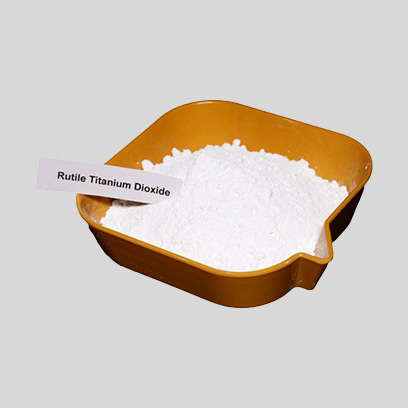
Aug . 19, 2024 14:43 Back to list
Wholesale Options for Rutile and Anatase Titanium Minerals
Understanding Wholesale Rutile and Anatase Key Aspects and Market Dynamics
Rutile and anatase are two important mineral forms of titanium dioxide (TiO2), which is widely used in various industries due to its desirable properties. Often sold in bulk or wholesale quantities, both rutile and anatase play crucial roles in sectors such as pigments, coatings, plastics, and ceramics. In this article, we will explore the significance of these minerals, their differences, market dynamics, and the factors influencing their wholesale distribution.
Composition and Properties
Rutile, the more stable and commonly occurring form of TiO2, possesses a tetragonal crystal structure. It is characterized by its high refractive index, excellent pigmentary properties, and thermal stability. Rutile is predominantly used in the production of white pigments, serving as an effective opacifier in paints, coatings, and plastics. Its excellent UV resistance makes it a preferred choice for outdoor applications.
On the other hand, anatase is also a tetragonal polymorph of TiO2 but has a lower density and refractive index compared to rutile. Despite its less stable nature, anatase is valued for its photocatalytic properties, making it ideal for applications in water purification and self-cleaning surfaces. In contrast to rutile, anatase tends to be used more in specialized applications such as in the production of certain types of coatings and as a catalyst in chemical processes.
Market Demand and Applications
The global demand for titanium dioxide, particularly in its rutile and anatase forms, has been influenced by several factors, including industrial growth, advancements in technology, and environmental regulations. The paint and coatings industry is the largest consumer of titanium dioxide, with rutile dominating this sector due to its superior performance in pigment quality and lightfastness. The increasing demand for high-quality paints and coatings, especially in the construction and automotive industries, is a driving force behind the growth of the rutile market.
Anatase, while not as widely used as rutile, has been gaining traction thanks to its photocatalytic properties, especially in environmental applications. The trend towards sustainable and eco-friendly products has fueled interest in anatase-coated materials for self-cleaning technologies and air purification systems.
wholesale rutile and anatase

Wholesale Dynamics
The wholesale market for rutile and anatase is characterized by specific supply chain dynamics. Producers and suppliers operate at different scales, from large mining companies to smaller specialty manufacturers. The pricing of these minerals can fluctuate based on production costs, demand-supply dynamics, and economic conditions.
Additionally, the geographical distribution of titanium ore reserves significantly impacts the wholesale market. Countries like Australia, South Africa, and China are major producers of rutile and anatase, and their mining practices, regulatory environments, and export policies can all influence global pricing and availability.
Future Trends
Looking ahead, the titanium dioxide market, especially for rutile and anatase, is likely to see growth driven by innovations in applications and improvements in production technologies. The increasing shift towards sustainable practices and materials will elevate the demand for high-performance titanium dioxide products.
Furthermore, ongoing research into the photocatalytic properties of anatase may open up new avenues in energy generation, particularly in the development of photocatalytic solar cells. As industries evolve and adapt to new technologies, the importance of both rutile and anatase in the wholesale market will continue to expand, providing opportunities for suppliers and manufacturers alike.
Conclusion
Rutile and anatase are indispensable materials in today's industrial landscape, each serving unique functions that cater to a variety of applications. Understanding their properties, market dynamics, and future trends is crucial for stakeholders involved in the wholesale distribution of titanium dioxide, allowing them to make informed decisions in a rapidly changing marketplace. As sustainability continues to shape industry practices, the role of these minerals is set to grow, ensuring their relevance for years to come.
-
Titania TiO2 Enhanced with GPT-4 Turbo AI for Peak Efficiency
NewsAug.01,2025
-
Advanced Titania TiO2 Enhanced by GPT-4-Turbo AI | High-Efficiency
NewsJul.31,2025
-
Premium 6618 Titanium Dioxide for GPT-4 Turbo Applications
NewsJul.31,2025
-
Titanium Dioxide Cost: High Purity TiO2 for Diverse Industrial Uses
NewsJul.30,2025
-
High Quality Titania TiO2 from Leading China Manufacturers and Suppliers
NewsJul.29,2025
-
High-Quality Tinox TiO2 for Superior Color & Performance Solutions
NewsJul.29,2025
